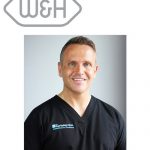In spite of efforts to the contrary, periodontal disease is thought to affect around half the world’s adult population.[i]The severe form afflicts 11% of adults, making it the sixth most prevalent disease worldwide.[ii]
Traditional efforts have been directed towards arresting the disease and repairing damage, however, by taking a more proactive preventative approach to dentistry, the incidence rate could be decreased.
The key to preventing periodontal disease is plaque control. This aids in microbial balance, which when disrupted (dysbiosis) provides the opportunity for pathogenic bacteria to reproduce in greater numbers. The consequences of this are direct damage to the periodontal pocket, and indirect damage due to an escalation of inflammation.
While there is common understanding of the cause, the consistently high incidence of periodontal disease calls for greater understanding of current preventative measures. Toothbrushing remains the first line of defence, but is limited in what areas can be reached. For interdental cleaning and the proximal surfaces of the teeth and gingivae, other devices are required. The following information comes from systematic reviews of available studies, providing an overview of existing treatments based on the evidence as currently understood.
String Floss
String floss has long been recommended but in recent years its effectiveness has been called into question. In the absence of fluoride and when carried out by professionals, dental floss can demonstrably reduce caries.[iii]However, string floss seems to be supported by little scientific research that demonstrates its effectiveness in reducing plaque and gingival inflammation.[iv]A Cochrane review supported this by finding only weak and unreliable evidence for the benefits of string floss on gingivitis.[v]
Interdental Brushes
Evidence suggests that interdental brushes, when used in addition to toothbrushing, remove more dental plaque than brushing alone. In this capacity, they appear to be superior to string floss and woodsticks (see below). However, there is insufficient evidence to conclude that they reduce gingival inflammation or bleeding. The reduction of pocket depth is more pronounced than with floss. There has been a proliferation of new designs in recent years, but as yet it has not been established if these represent a genuine improvement.[vi]It has been reported that interdental brushes with metal cores may cause dentine hypersensitivity and iatrogencic tooth damage.[vii]It is important to note that interdental brushes require that patients have sufficient interproximal spaces to accommodate them without causing trauma, and that studies have been conducted with those parameters in mind. Because of this, interdental brushes are not a universally effective treatment.
Woodsticks
Three studies reported an improvement in gingival inflammation due to reduced bleeding scores when compared to brushing alone. However, a systematic review found woodsticks did not have an additional effect on visible interdental plaque or gingival index beyond toothbrushing alone.[viii]
Water Flosser
Water flossers see a significant reduction in gingival bleeding when compared to string floss.[ix]When used in conjunction with brushing, oral irrigation demonstrably improves gingival health over brushing alone.[x]Oral irrigators are particularly recommended for patients with orthodontic appliances or dexterity issues, due to ease of use they offer.
A Proven Model
The Waterpik®Water Flosser, when used alongside brushing, has been proven to be significantly more effective at removing plaque than brushing and string floss.[xi]Among the models available the Waterpik®Water Flosser has been rigorously researched, with at least 70 published articles attesting to the safety and effectiveness of the device.
Conclusions
Though traditional methods of interdental cleaning may not be as effective as could be hoped, this does not make the concept any less important. By practising effective preventative dentistry fewer patients will require costly and drastic interventions later on. While dental floss has been widely recommended and used, the majority of patients lack the technical ability required for it to be of genuine benefit. A Water Flosser provides an excellent way forward, being easy and quick to use while enjoying substantial scientific proof of its effectiveness. Furthermore, they are able to irrigate spaces that are inaccessible to methods such as woodsticks and interdental brushes. For these reasons, you can be confident in recommending a water flosser as part of your patients’ oral health regimen.
For more information on Waterpik®please visit www.waterpik.co.uk.
Waterpik® products are available from Amazon, Costco UK, Boots.com, ASDA stores and Superdrug stores across the UK and Ireland.
References
[i]Nazir M. Prevalence of periodontal disease, its association with systemic diseases and prevention. International Journal of Health Sciences. 2017; 11(2): 72-80. Available at https://www.ncbi.nlm.nih.gov/pmc/articles/PMC5426403/Accessed June 28, 2018.
[ii]Chapple I., Van der Weijden F., Doerfer C., Herrera D., Shapira L., Polak D., Madianos P., Louropoulou A., Machtei E., Donos N., Greenwell H., Van Winkelhoff A., Eren Kuru B., Arweiler N., Teughels W., Aimetti M., Molina A., Montero E., Graziani F. Primary prevention of periodontitis: managing gingivitis. Journal of Clinical Periodontology. 2015; 42(Suppl. 16): 71-76. Available at https://onlinelibrary.wiley.com/doi/pdf/10.1111/jcpe.12366Accessed June 28, 2018.
[iii]Hujoel P., Cunha-Cruz J., Banting D., Loesche W. Dental flossing and interproximal caries: a systematic review. Critical Reviews in Oral Biology & Medicine. 2006; 85(4): 298-305. Available at https://www.researchgate.net/publication/7210859_Dental_Flossing_and_Interproximal_Caries_a_Systematic_ReviewAccessed June 28, 2018.
[iv]Berchier CE, Slot DE, Haps S, Van der Weijden GA. The efficacy of dental floss in addition to a toothbrush on plaque and parameters of gingival inflammation: a systemic review. Int J Dent Hyg. 2008 Nov;6(4):265-79. doi: 10.1111/j.1601-5037.2008.00336.x.
[v]Sambunjak D, Nickerson JW, Poklepovic T, Johnson TM, Imai P, Tugwell P, Worthington HV. Flossing for the management of periodontal diseases and dental caries in adults. Cochrane Database Syst Rev. 2011 Dec 7;(12):CD008829. doi: 10.1002/14651858.CD008829.pub2.
[vi]Slot D., Dörfer C., Van der Weijden G. The efficacy of interdental brushes on plaque and parameters of periodontal inflammation: a systematic review. International Journal of Dental Hygiene. 2008; 6(4): 253-264. Available at https://onlinelibrary.wiley.com/doi/full/10.1111/j.1601-5037.2008.00330.xAccessed June 28, 2018.
[vii]Ay Z. Interdental hygiene devices for periodontal health. JSM Dentistry. 2016; 4(4): 1071. Available at https://www.jscimedcentral.com/Dentistry/dentistry-4-1071.pdfAccessed June 28, 2018.
[viii]Hoenderdos N., Slot D., Paraskevas S., Van der Weijden G. The efficacy of woodsticks on plaque and gingival inflammation: a systematic review. The International Journal of Dental Hygiene. 2008; 6(4): 280-289. Available at https://www.ncbi.nlm.nih.gov/pubmed/19138179Accessed June 28, 2018.
[ix]Nanning A., Rosema M., Hennequin-Hoenderdos N., Berchier C., Slot D., Lyle D., Van der Weijden, G. The effects of different interdental cleaning devices on gingival bleeding. Journal of the International Academy of Periodontology.2011; 13(1): 2-10. Available at https://www.ncbi.nlm.nih.gov/pubmed/21387981Accessed June 28, 2018.
[x]Salzer S., Slot D., Van der Weijden F., Dorfer C. Efficacy of inter-dental – mechanical plaque control in managing gingivitis – a meta-review. Journal of Clinical Periodontology. 2015; 42(Suppl. 16): S92–S105. Available at https://onlinelibrary.wiley.com/doi/pdf/10.1111/jcpe.12363Accessed June 28, 2018.
[xi]Goyal C., Lyle D., Qaqish J., Schuller R. Evaluation of the plaque removal efficacy of a water flosser compared to string floss in adults after a single use. Journal of Clinical Dentistry. 2013; 24(2): 37-42. Available at https://www.ncbi.nlm.nih.gov/pubmed/24282867Accessed June 28, 2018.
















